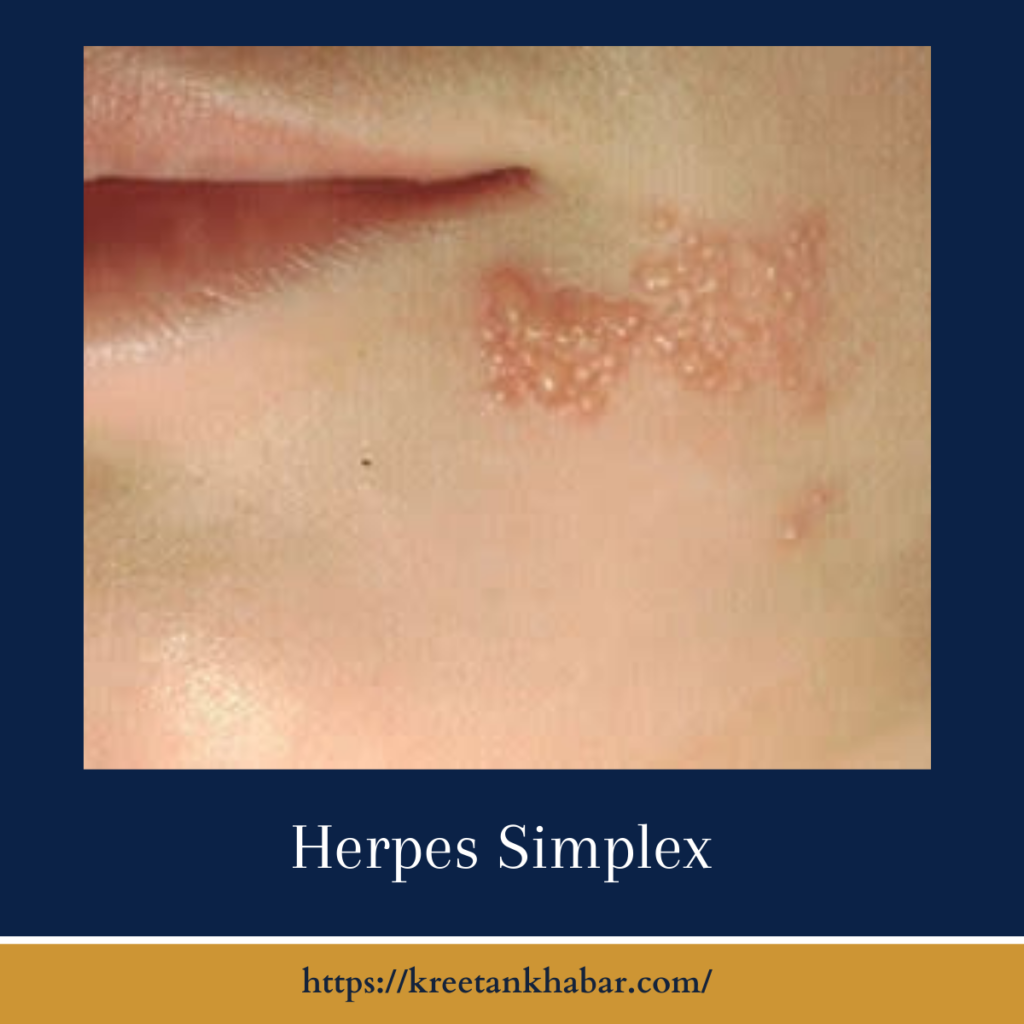Herpes Simplex: A Human-Centric Exploration
In the intricate tapestry of human health, certain viral companions have made a lasting impact, and among them is the Herpes Simplex virus (HSV). This microscopic entity, residing within the nerves, has been a part of the human experience for centuries. Let’s embark on a human-centric exploration, unraveling the complexities of Herpes Simplex, from its manifestations and transmission to the emotional nuances it introduces into the lives of those affected.

The Viral Companion:
- A Common Presence:
- Herpes Simplex isn’t a stranger; it’s a common presence in the world of viruses that infect humans. The virus has two types, HSV-1 and HSV-2, each with its unique characteristics and preferred domains.
- Residence in Nerve Ganglia:
- Picture Herpes Simplex as a lodger in the nerve ganglia, finding a quiet home within the intricate neural pathways. It establishes a latent infection, occasionally making its presence known through outbreaks.
Manifestations and Symptoms:
- Cold Sores and Oral Herpes (HSV-1):
- HSV-1 often manifests as the familiar cold sores or oral herpes. These pesky sores can make an appearance on or around the mouth, causing discomfort and a distinct visual cue to the virus’s temporary reawakening.
- Genital Herpes (HSV-2):
- HSV-2, on the other hand, tends to favor the genital region. Genital herpes can bring about lesions, itching, and discomfort, impacting both physical and emotional well-being.
- Asymptomatic Carriers:
- Interestingly, not everyone hosting the Herpes Simplex virus experiences visible symptoms. Some individuals are asymptomatic carriers, unaware of the virus’s presence within them.
More points of Manifestations and Symptoms of Herpes Simplex:
- Cold Sores (HSV-1):
- Think of HSV-1 as the artist behind cold sores. It’s a common manifestation, causing small, fluid-filled blisters around the mouth or on the lips. These little eruptions can be uncomfortable and occasionally painful.
- Genital Lesions (HSV-2):
- HSV-2, the counterpart with a preference for the genital region, brings about genital herpes. This manifests as lesions, redness, and itching in the genital area, creating a distinctive set of symptoms that impact daily life.
- Asymptomatic Carriage:
- Some individuals are like silent carriers of the Herpes Simplex virus, hosting it without showing visible symptoms. It’s a peculiar aspect, where the virus remains dormant, and carriers might not be aware of their viral companionship.
- Outbreak Triggers:
- Picture Herpes Simplex outbreaks as sensitive artists reacting to triggers. Stress, illness, or a weakened immune system can serve as triggers, leading to the virus resurfacing and causing visible symptoms.
- Pain and Discomfort:
- Pain and discomfort accompany both oral and genital manifestations. The physical sensations can range from mild discomfort to more pronounced pain, adding an extra layer to the experience.
- Flu-Like Symptoms:
- During outbreaks, Herpes Simplex doesn’t shy away from introducing flu-like symptoms. Fever, body aches, and general malaise can make their presence known, mimicking the onset of a common viral infection.
- Itching and Tingling Sensations:
- Before the visible signs appear, individuals might experience itching or tingling sensations. It’s like the virus giving a subtle warning, signaling the impending arrival of an outbreak.
- Duration of Outbreaks:
- Outbreaks are like temporary performances. The duration varies, with symptoms typically lasting a week or two. Understanding the temporary nature of outbreaks can provide a sense of relief for those dealing with recurrent episodes.
- Recurrence Patterns:
- Herpes Simplex doesn’t follow a strict schedule, but there can be patterns of recurrence. Some individuals might experience frequent outbreaks, while others have longer intervals between episodes.
- Psychosocial Impact:
- Beyond the physical symptoms, Herpes Simplex can cast a shadow on mental well-being. The psychosocial impact, including stress and anxiety, adds another layer to the overall experience of living with the virus.
Understanding the manifestations and symptoms of Herpes Simplex involves recognizing the diverse ways in which the virus can manifest in different individuals. It’s a multifaceted aspect of health that requires empathy, support, and accurate information to navigate effectively.
Transmission Dynamics:
- Close Contact Contingency:
- Transmitting Herpes Simplex is like a contingency plan activated through close contact. The virus spreads through direct contact with the infected area during outbreaks, emphasizing the need for awareness and caution.
- Vertical Transmission:
- Vertical transmission, from an infected mother to her newborn during childbirth, adds another layer to the transmission dynamics. This underlines the importance of medical guidance during pregnancy for those with a history of herpes.
Emotional Landscape:
- Stigma and Misconceptions:
- The emotional landscape of Herpes Simplex often carries the weight of stigma and misconceptions. Societal attitudes can add an emotional burden to those living with the virus, emphasizing the need for empathy and accurate information.
- Navigating Disclosure:
- Disclosing a herpes diagnosis can be akin to navigating a delicate conversation. It involves trust, openness, and a shared commitment to understanding, making it a crucial aspect of managing relationships.
Management and Treatment:
- Antiviral Medications:
- Managing Herpes Simplex involves the use of antiviral medications. These medications help control outbreaks, reduce symptoms, and, in some cases, decrease the risk of transmission.
- Preventive Measures:
- Preventive measures, including safe sex practices and medication adherence, play a role in managing and minimizing the impact of Herpes Simplex. These measures contribute to an overall strategy aimed at reducing the frequency and severity of outbreaks.
Conclusion: A Human Perspective on Herpes Simplex
In the grand narrative of human health, Herpes Simplex emerges as a nuanced character, influencing both the physical and emotional dimensions of those it encounters. This exploration seeks to humanize the virus, emphasizing the importance of empathy, understanding, and accurate information in navigating the complex landscape of Herpes Simplex. By fostering open conversations and embracing a holistic approach to health, we can collectively contribute to destigmatizing the virus and supporting those affected by it.
Read also : Exploring the Delightful Boost of the Green Tea Shot 2023